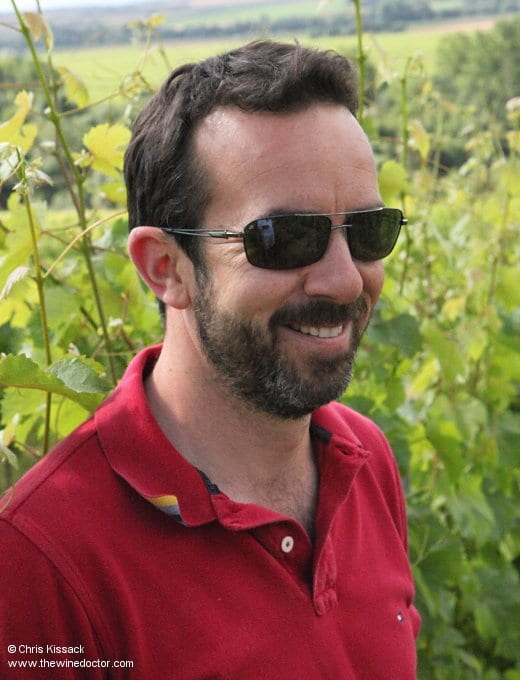Loire 2016
Matthieu Baudry piloted his battleship-grey camion up a subtle incline before eventually bringing it to a halt, at which point I eased open the giant door, the hinges groaning their complaint as I did so. From my lordly position, high up in the cab, I half-slid and half-tumbled down and out into the hazy warmth of the mid-July sun. My feet made contact with the ground; it is always better to lead with your feet than with your head I think, although the latter had certainly been on the cards for a second or two. I landed on a coarsely sandy soil, the grains immediately compacting and shifting beneath my feet. Looking up, I made a quick visual survey of the sandy sea of vines that surrounded me.
Matthieu (pictured) and I had arrived on a very subtle rise in the land, a broad and understated sandy ridge running east-west, sandwiched between the slow-moving waters of the Vienne to the south and one of its tributaries, the Ruisseau de Saint-Mexme, to the north. Beyond this little stream I could see a tree-covered escarpment rising up above the flood plain of the Vienne. On these steep slopes of ancient limestone the very best wines of the appellation originate, from names such as Bernard Baudry, Philippe Alliet and Charles Joguet, among others. By contrast, in the opposite direction, to the south, the distant land simply disappeared behind the trees. What really caught my eye, however, was the device that stood nearby, towering over the vines. And over us.
A Silent Machine
There were two components to this device. The first and admittedly less obvious of the two was a furnace, broad at its base, narrowing about halfway up, and glistening a copper-bright hue in the sunshine. The second was a tower that stood twice as tall, a glinting steely silver, topped off by two turbine blades which shimmered a brilliant white. It was a frost protector, the fan’s purpose being to displace freezing air at ground level, replacing it with warmer air from higher up in the atmosphere, in order to protect vulnerable springtime buds from devastating sub-zero temperatures. I have spotted many such fans in both Bordeaux and the Loire Valley and they have always been accompanied by a furnace, like the one I saw here, presumably to give an extra degree or two of warmth, although it appears to be an optional extra. It is the temperature difference between the upper and lower layers of air, and how effectively that warmer air can be brought down to ground level, that really counts.

